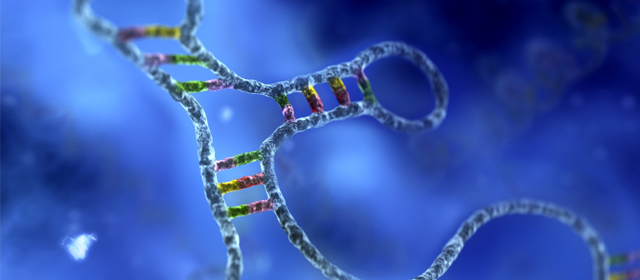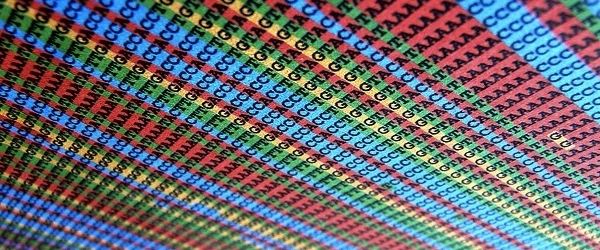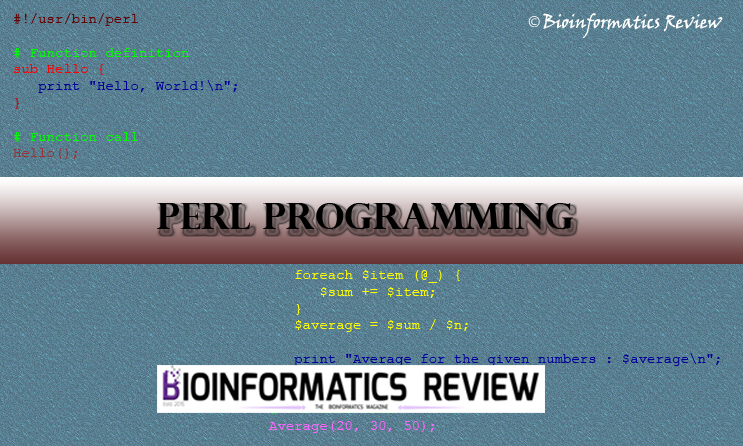As we have discussed the miRNAs, their formation, and functions (miRNA targets and their functions ) and an overview on some of the available miRNA target prediction tools (miRNAs and their Target Prediction Tools: An Overview ) in previous articles. In this article, I have tried to give basic information about the common features which are involved in the formation of most of the miRNA target prediction algorithms and tools.
miRNAs are the short endogenous RNAs which are ~22 nucleotides long and originate from the non-coding RNAs [1]. miRNAs are expressed from the long transcripts which are produced in viruses, plants, animals and single-celled eukaryotes [2]. miRNAs targets are the complementary sequences in mRNA, which are usually present in the 3’-UTR and inhibits the translation process or induce the target degradation to prevent the protein synthesis. Computational methods are used to identify that how miRNAs specifically target the mRNAs. There are few common features on which the miRNA target prediction tools are based. These features are used for developing an algorithm for a maximum number of the miRNA tools. These features are described below [3]:
1.Seed match
The miRNA region of the first 2 to 8 nucleotides from the 5’-end to the 3’-end is called ‘seed sequence’[4]. In most of the tools, a seed sequence with a Watson-Crick pairing between miRNA and mRNA is considered as seed match and there is no gap in a perfect seed matching[3].
The seed matching is of several kinds depending on the algorithm, but mostly used seed matching are as follows [5-7]:
- 6-mer: it includes perfect seed matching for six nucleotides between the miRNA seed and the mRNA.
- 7-mer-m8: it is a perfect seed match between 2-8 nucleotides of miRNA seed sequence.
- 7mer-A1: it is a perfect seed match between 2-7 nucleotides of miRNA seed sequence in addition to an A across the miRNA first nucleotide.
- 8-mer: It is a perfect seed match between nucleotides 2-8 of miRNA seed sequence in addition to an A across the miRNA first nucleotide.
2.Conservation
It is the reservedness of the sequence across the species. This feature analyzes the regions such as the miRNA, 3’-UTR, 5’-UTR [3]. It has been found that the seed region is more conserved than other regions [5]. A small portion of miRNA which interacts with the target mRNA has conserved pairing which compensates for the mismatched seed and known as ‘3’-Compensatory sites’ [8]. Conservation analysis helps to predict whether a predicted miRNA target is functional or not [3].
3. Free Energy
It is Gibb’s Free Energy which is calculated to predict the stability of a structure. It is calculated as the change in free energy ( delta- G). In this case, when miRNA binds to the target mRNA and results in a stable structure, then it is considered as the most likely target of that miRNA. The reactions with more negative delta-G are less reactive, therefore have more stability. The hybridization of miRNA with its target mRNA provide information about the high and low free energy regions and delta-G predicts the strength of bonding between the miRNA and its target mRNA [9].
4. Site Accessibility
Site Accessibility tells about that how easily a miRNA can locate its target mRNA and get hybridized with it. The hybridization of miRNA with its target mRNA involves two steps:
- miRNA binds to a short accessible region of mRNA.
- Once it completes binding to the target, the mRNA unfolds [10].
Hence, to find the most probable target of the miRNA, the amount of energy required to make a site accessible is evaluated.
There are few other features which are used in most of the target prediction tools algorithms, they are described below:
1. Target-site abundance: It determines the number of sites occurring in the 3’-UTR [11].
2. Local AU content: It is the concentration of A and U nucleotides which flank in the corresponding seed region [6,10].
3. GU Wobble seed match: It calculates the chances of a G pairing with a U instead of C [12].
4. 3’-Compensatory pairing: It is the pairing region (12-17 nts) in which the base pairs match with miRNA nucleotides.
5. Seed pairing stability: It is the free energy change calculated for a predicted duplex [11].
6. Position Contribution: It determines the position of a target sequence within the mRNA [13].
These are the common features used to develop the miRNA target prediction algorithms and tools. In my upcoming article, I will try to explain some new features which have been developed recently to predict miRNA targets more efficiently.
References:
- Bartel D. MicroRNAs: genomics, biogenesis, mechanism, and function. Cell 004;116:281–97.
- Bing Liu, Jiuyong Li, and Murray J. Cairns. Identifying miRNAs, targets and functions. Briefings in Bioinformatics. page 1-19; doi:10.1093/bib/bbs075.
- Sarah M. Peterson, Jeffrey A. Thompson, Melanie L. Ufkin, Pradeep Sathyanarayana, Lucy Liaw, and Clare Bates Congdon. Common features of miRNA prediction tools. Frontiers in Genetics. doi : 10.3389 /fgene .2014.00023.
- Lewis, B. P., Burge, C. B., and Bartel, D. P. (2005). Conserved seed pairing, often flanked by adenosines, indicates that thousands of human genes are microRNA targets. Cell 120, 15–20. doi: 10.1016/j.cell.2004.12.035.
- Lewis, B. P., Shih, I. H., Jones-Rhoades, M. W., Bartel, D. P., and Burge, C. B.
(2003). Prediction of mammalian microRNA targets. Cell 115, 787–798. doi:
1016/S0092-8674(03)01018-3 - Brennecke, J., Stark, A., Russell, R. B., and Cohen, S. M. (2005). Principles
of microRNA-target recognition. PLoS Biol. 3:e85. doi: 10.1371/journal.pbio.0030085. - Krek, A., Grun, D., Poy, M. N., Wolf, R., Rosenberg, L., Epstein, E. J., et al. (2005).
Combinatorial microRNA target predictions. Genet. 37, 495–500. doi:
10.1038/ng1536. - Friedman, R. C., Farh, K. K., Burge, C. B., and Bartel, D. P. (2009). Most mammalian mRNAs are conserved targets of microRNAs. Genome Res. 19, 92–105.
doi: 10.1101/gr.082701.108. - Yue, D., Liu, H., and Huang, Y. (2009). Survey of computational algorithms for MicroRNA target prediction. Genomics 10, 478–492. doi:
10.2174/138920209789208219. - Long, D., Lee, R., Williams, P., Chan, C. Y., Ambros, V., and Ding, Y. (2007). Potent
effect of target structure on microRNA function. Nat. Struct. Mol. Biol. 14,
287–294. doi: 10.1038/nsmb1226 - Garcia, D. M., Baek, D., Shin, C., Bell, G. W., Grimson, A., and Bartel, D. P. (2011).Weak seed-pairing stability and high target-site abundance decrease the proficiency of lsy-6 and other microRNAs. Nat. Struct. Mol. Biol. 18, 1139–1146. doi:10.1038/nsmb.2115
- Doench, J. G., and Sharp, P. A. (2004). Specificity of microRNA target selection in translational repression. Genes Dev. 18, 504–511. doi: 10.1101/gad.1184404
- Grimson, A., Farh, K. K., Johnston, W. K., Garrett-Engele, P., Lim, L. P., and Bartel,D.P.(2007). MicroRNA targeting specificity in mammals: determinants beyond seed pairing. Mol. Cell 27, 91–105. doi: 10.1016/j.molcel.2007.06.017





